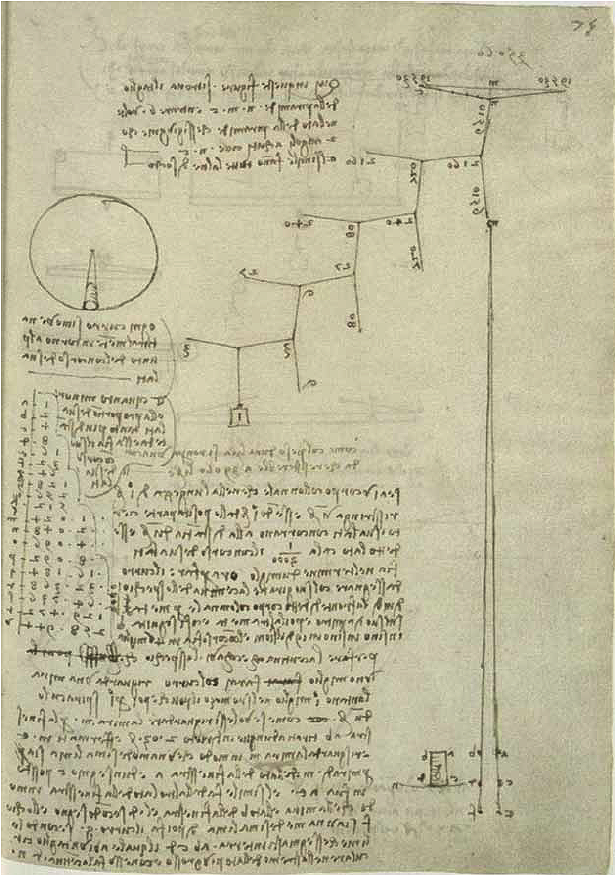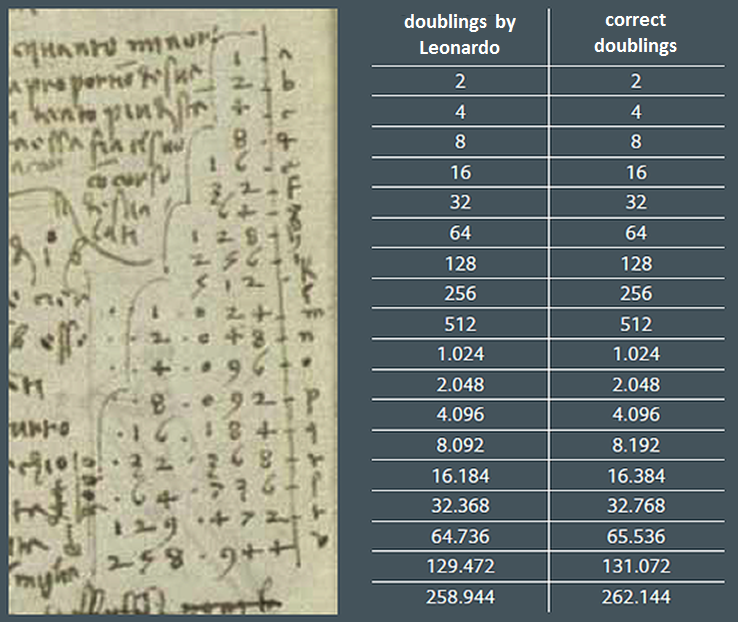Leonardo da Vinci — the genius of the Renaissance — made some miscalculations. Not in complex formulas, but in simple sums. Below you see for example page 75R of Codex Madrid I. This collection of manuscripts dates back to the period around 1490, but it was only discovered in 1966 in the Bibliotheca National de España in Madrid together with the so-called Codex Madrid II. The two volumes, containing 197 pages, are bound in red leather. Topics discussed include mechanics, statics, geometry and construction of fortifications. There is a list of 116 books Leonardo was using at the time, including some basic Latin grammar books. The text is written in Italian dialect with some errors. The manuscripts are of great importance as they contain about 15% of Leonardo's notes referenced today, but are also important for the quality and relevance of the works they contain, which are among the major engineering treatises of their time. Nonetheless, it is less known than for example the Codex Leicester that was sold to Bill Gates at Christie's auction house on 11 November 1994 in New York for $US30,802,500.

On page 75R of Codex Madrid I we take a closer look at the table on the left side of the page, somewhere in the middle below the circle or sphere. In mirrored handwriting you see a series of numbers representing successive doublings of 2. But Leonardo makes a mistake at number 4096, which he doubles to 8092 (instead of 8192). After this, the duplications are again correct, taking into account the error made earlier.

Unmistakable this is a miscalculation of Leonardo and not of some sloppy copyists, as it was found in the original (mirrored) manuscript of da Vinci himself. That it was only discovered right now, five hundred years after da Vinci's death, is probably due to the late discovery of the manuscript, barely fifty years ago.
Input
An integer $$n \in \mathbb{N}$$.
Output
The first line contains the letter a, followed by a space and the integer $$n$$. The next 25 lines each contain the next letter of the alphabet, followed by a space and the doubling of the integer on the previous line. Following Leonardo da Vinci, integers are always written in mirror writing, meaning that the digits of an integer are in reverse order.
Example
Input:
2Output:
a 2
b 4
c 8
d 61
e 23
f 46
g 821
h 652
i 215
j 4201
k 8402
l 6904
m 2918
n 48361
o 86723
p 63556
q 270131
r 441262
s 882425
t 6758401
u 2517902
v 4034914
w 8068838
x 61277761
y 23445533
z 46880176